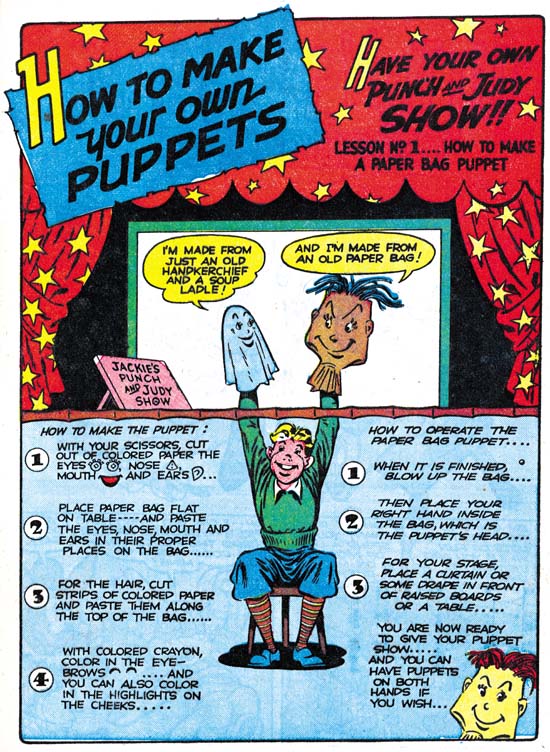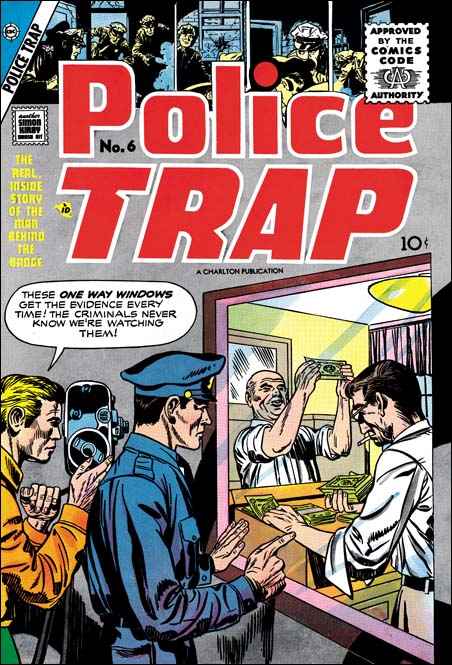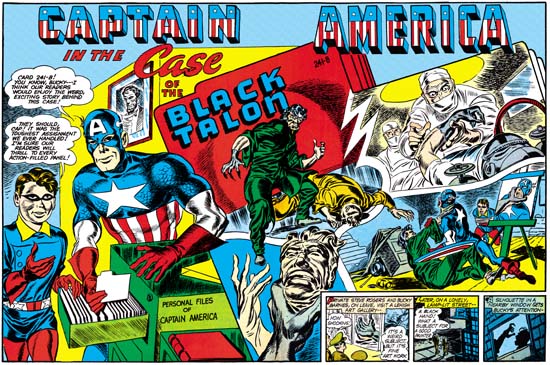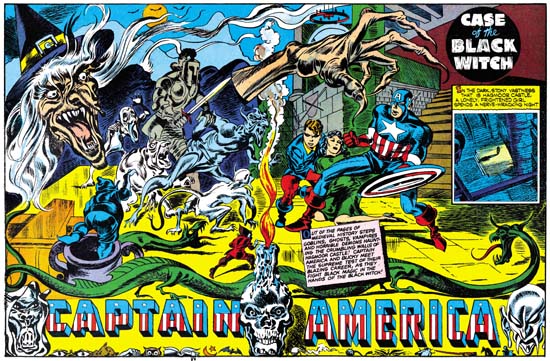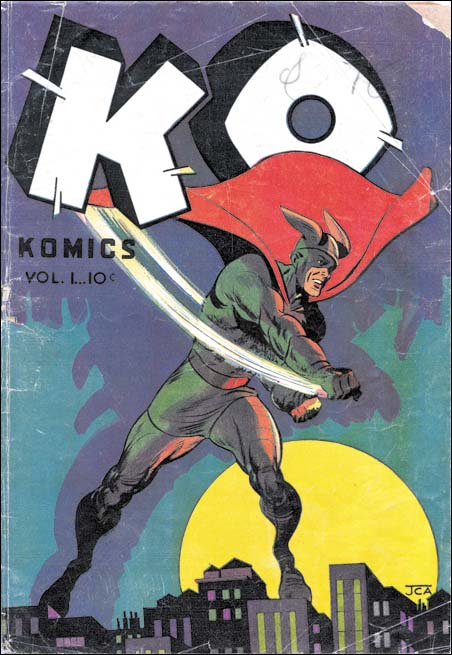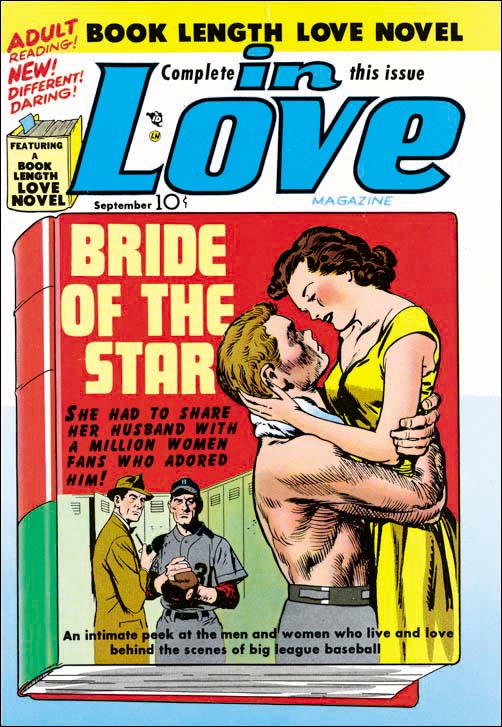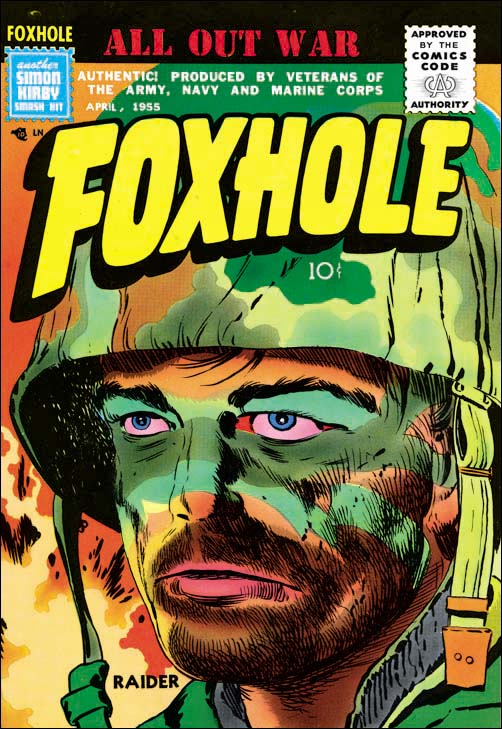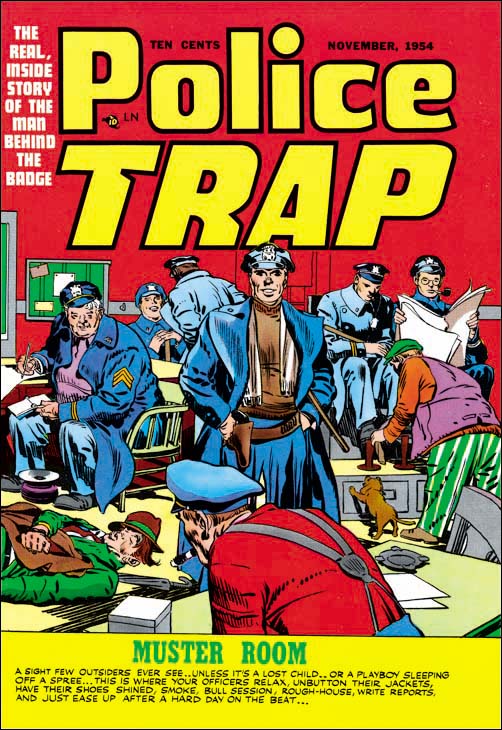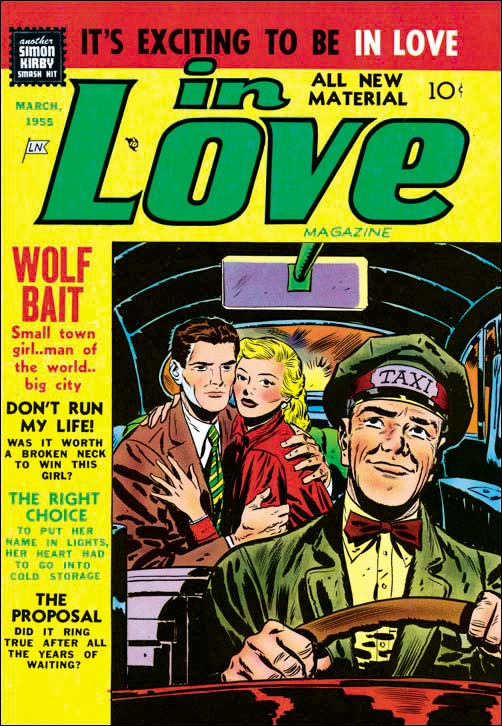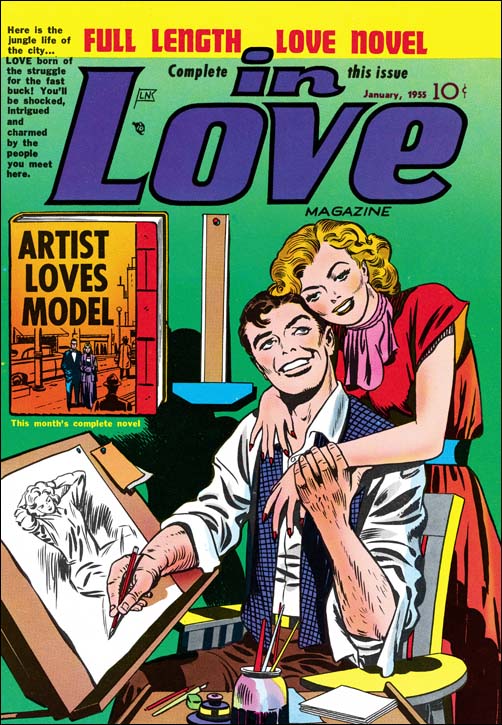
Black Magic #8 (December 1951) by Jack Kirby
Simon and Kirby produced the earlier run of Black Magic (#1 to #33). During that period Jack would not necessarily draw stories for every issue but he did all the covers. This means that it was not too unusual for Kirby to draw a cover based on an interior story by another artist. This can provides some interesting comparisons of how different artist handle the same subject. But as you will see in the example I am providing here that there are other possibilities.
Simon and Kirby gave great care in the covers for the comics that they produced, and Black Magic #8 is no exception. It provides a complete story in just one image. Minus the conclusion of course, they wanted you to buy the comic to get that. In this cover we are presented with a marvelous demon of the type only Kirby could create. He is crouching, almost as if ready to spring with deadly intend at the first opportunity. The comments of the lady and the old man indicate that the demon was summoned and only the magic circle confines it. The young woman looks astonished and horrified while the man seems a little too smug. You get the feeling that despite the assurances the man gives nothing good is going to come out of what he has done.
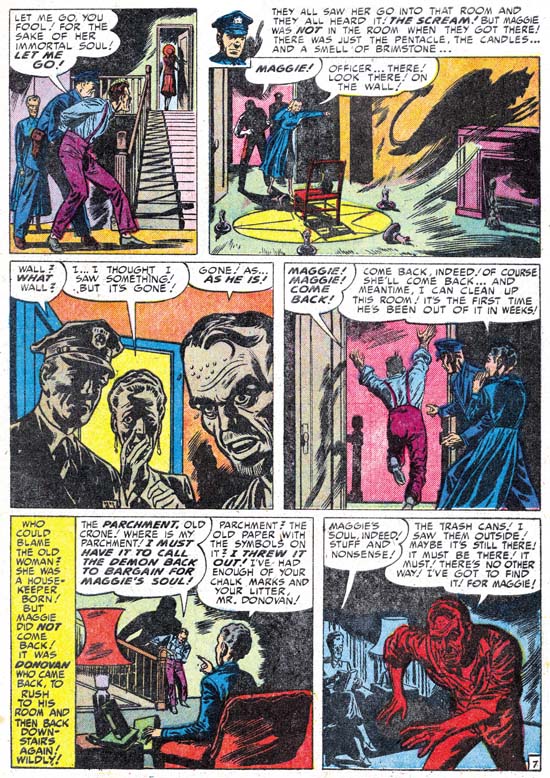
Black Magic #8 “Donovan’s Demon” by unidentified artist
The story is unsigned but the GCD attributes it to Bob McCarty. I am pretty certain that is not correct. I have not posted on McCarty yet so I do not want to get into an analysis of why I do not think he did this story. For now let it suffice to say that I find Bob to be an excellent artist. Joe has remarked to me that they hired the best artists and in general I agree with him. However this story artist definitely fall into the lower echelon of the shop talent. A story like this requires at some point to present the reader with a good depiction of the demon. This artist only gives us a shadow and even that is not very impressive. Many have made the claim the Kirby provided layouts for the stories that artists drew for S&K. I just do not believe that is true in this case. Kirby would use shadows to tone down the affects of distressing subject matter such as a man hitting a woman or a murder taking place. But I do not believe Jack would ever consider only showing a shadow and never the actual demon as was done in this story. Further the layout of the story just does not seem to me to have the Kirby touch.
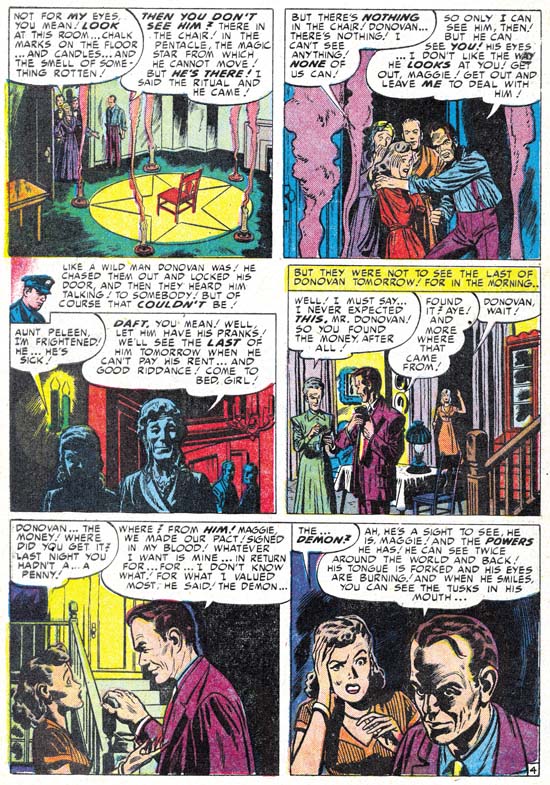
Black Magic #8 “Donovan’s Demon” by unidentified artist
The last panel on page 4 has a marvelous depiction of a women. It is so good that it just stands out from all the rest of the page. Clearly Jack Kirby has once again step in acting as art editor. Considering how poorly the story artist drew this character elsewhere I shudder to think what she looked like before Jack’s rescue.
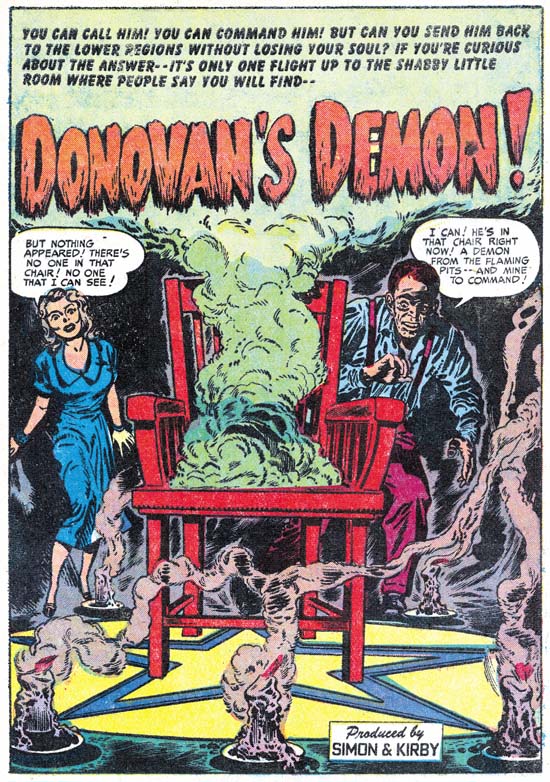
Black Magic #8 “Donovan’s Demon” by Jack Kirby and unidentified artist
The splash page provides an alternate take from the comic cover. Here, like the women, we do not actually see the demon. But even without the man’s claim that he can see the demon, we know that something unnatural is here. Smoke bellows from the chair without any sign of a fire. It may only be a draft, but the candles’ flames and smoke snake eerily about. Even the chair seems to have a presence beyond that of a mere piece of furniture. The woman was clearly done by Jack and is a good match for the one on the cover. On the other hand the man was obviously drawn by the story artist. Unfortunately he seems overly large compared to the woman. Because of the exaggerated perspective of the rest of the splash, I think Kirby got her size just right. The candles are a recurring motif for Simon and Kirby. We recently saw a similar one in the double page splash from Captain America #8. I cannot think of another S&K example of a chair handled quite like the one from this splash. However the exaggerated perspective that is done so well here is a Kirby trademark and seems beyond the capabilities of the story artist. So I would say Jack drew the entire splash except, unfortunately, the figure of the man. So here we have a chance to see alternate takes of the same subject both by Jack Kirby himself.




